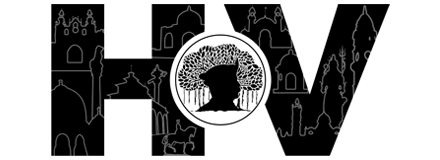Baroda’s connection with Bharatanatyam begun in 1883, when the then Maharaja Sayajirao Gaekwad III , married the princess of Tanjore called Lakshmibai of Tanjore (Renamed as Maharani Chimnabai after marriage). As part of the wedding dowry, a troupe of temple dancers and musicians were sent to Baroda.
The Troupe :
The troupe consisted of the dancers and a group of musicians.The dancers were the temple devadasis from Tanjore/Kumbakonam, Gauri, Sarada, and Kamu; nattuvanars Kannuswamy (Pillai) Nattuvanar and Kuppuswamy Nattuvanar; and the following were the musicians: Muthukrishnan (Nagaswaram), Karandai Ratnam Pillai (Thavil), Ramaswamy (Otthu drone), and Vadivelu Pillai, Sabapathi, and Subramaniam (Mridangam). Sarada and Kamu were soon replaced by Nagaratnam and finally by Gauri’s cousin Kanthimathi in 1891.
There were a few Kathak dancers at the palace too such as Gaurabala, who came from Mumbai, Chamoo and Sharda. Singers Mirabai and Haridham too stayed in the state.
Royal Patronage :
Maharaja Saiyajirao Gaekwad III was a great visionary and a generous patron and different art forms. He maintained a great number of painters, academicians, visionaries and dancers at his court. Soon after he came into power in the 1880s, he had laid the foundation for the first music college in India, Gayan Shala. The Music Conference in Baroda he began also featured musicians, dancers, and other performing artists and drew visitors from all parts of India. While important in maintaining support for dance and music in Baroda, Sayajirao’s influence “remained largely confined” to the court and festivals .
The above group was managed by the “Kalavant Khatha,” the State Department of Artists, that employed and managed the performers.Just like the other arts and artists this group and the dance form also prospered under the great patronage of the Maharaja. His court, starting with Gauri and Kanthimathi’s dancing troupe, maintained a steady number of artists which had risen up to 48 people by 1916 .
Gaura and Kanthimati :
Gaura came to Baroda when still young (12 years old) and was a fine dancer and composer.She lived in a three-storeyed mansion with other palace entertainers. An average day of the dancers used to begin with good breakfast, milk with egg, and badam halwa to build stamina. Later a buggy coach would come to take them for the practice of Bharatanatyam daily at Indumati palace. Dancers used to performed mostly at Motibaug and Nazarbaug Palaces. Every wednesday they danced at Indumati Palace and sometimes at the Motibaug Palace as per the Maharaja’s convenience.
Gaura earned Rs.112 as a monthly salary and sponsored meals for 50-60 persons daily as a symbol of generosity. She had three sons and a daughter. Her sons trained as nattuvanars and eventually accompanied her. She passed on the dance form to her daughter Chandra Amma as well as to Tulsidas, one of her three sons. Chandra amma, also danced in the Lukhsmi Villas Palace till her marriage.The two other palace dancers, Saraswati (who lived in Mumbai) and Ratnamala (who lived in Baroda) also learnt Bharatanatyam from Gaura.
Gaura was the court dancer for 32 years, whereas Kanthimati (the replacement dancer of Bhanumati) danced for 35 years. Gaura amma died in 1940 (by other account in 1941). Kanthimati died in 1953. Chandra amma, Gaura’s daughter died in 1983.

Legacy :
“attendance”, the yearbook of dance, quotes in its Gujarat Special Edition, 2002 (this issue/book remains the only authentic overview and first hand compilation of history of dance in Baroda (and Gujarat) till date) :
“Unlike the mix and fix, match and latch (to other languages) that came to dilute the form, these dancers presented only traditional margam, no deviation, not even to please the kings! They never composed anything in Marathi or Gujarati to curry favour.”
These two Devadasis along with the other artists came just as a part of the dowry of the Queen. But they created their legacy not only by preserving their native dance form without adulteration but also rooting it so strongly in the state that it lives and breathes in Gujarat till date.
As per the wish of Gaura, to remember her contribution of Gaura in the field of Bharatanatyam, Maharaja Pratapsinh Gaekwad got her statue made (seen in header image). This statue is now housed at the Maharaja Fatesingh Museum inside the Lukhsmi Villas Palace compound.
Rare Video of Bharatnatyam
Below is a rare video that contains footage of “Bharatanatyam” performed by the replacement dancers of Gaura and Kanthimati .The video was likely filmed at the 1926 Golden Jubilee celebrating 50 years of Maharaja Sayajirao Gaekwad III’s reign, and the locations featured are the arena/agad, Motibaug Palace gardens, Nazarbaug Palace gardens, and Nyay Mandir !
PS: Checkout the detailed post by Minai on her Blog at here & here…






Guru shri(Prff.) Kubernath Tanjorkar was The HoD of Dance In music college for about three decades.(1955-85)I am fortunate to accompany him as violinist in their troupe stage performances and tours. His love for teaching and demonstrations to the students were so much powerful that it had lasting mesmeric effect for ever. His divine singing was very classic with spiritual divinity within.Not only to audience but to accompanying musicians as well.